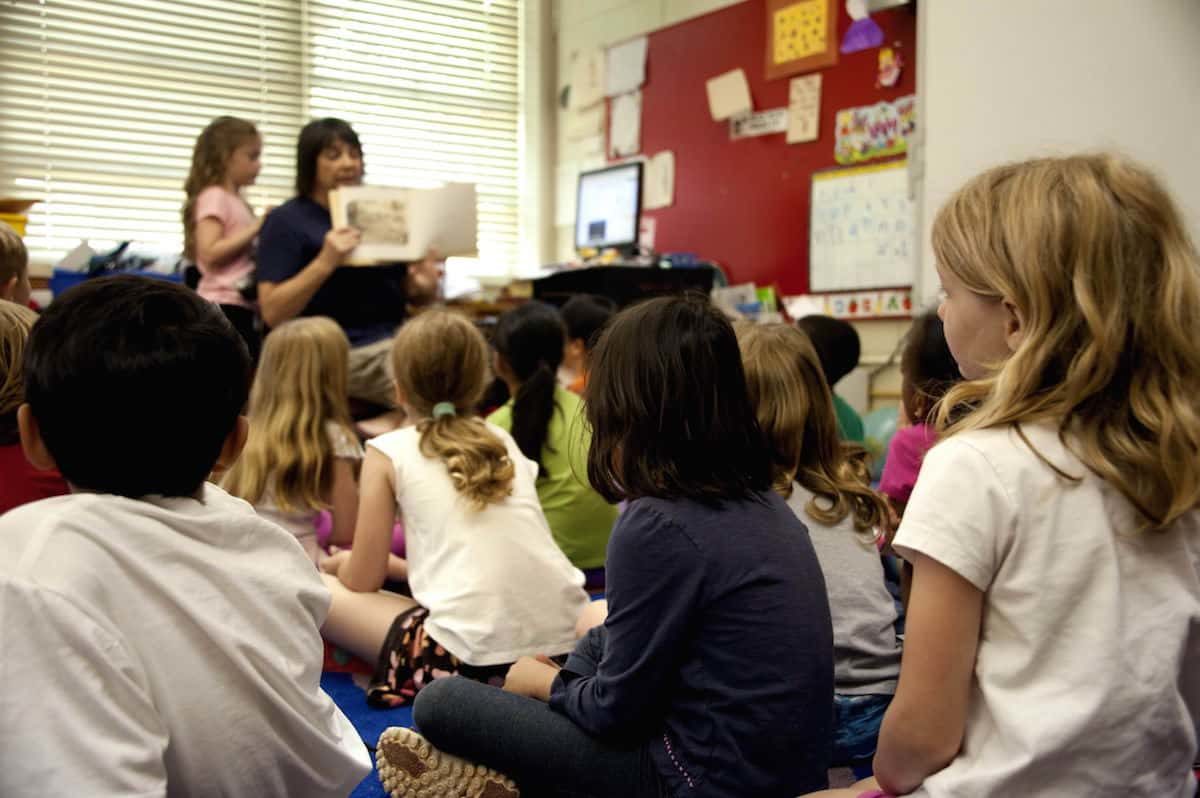

There has been a lot of discussion recently concerning how school districts use their guaranteed classroom teacher allotments. The state sends out classroom teacher positions that are calculated based on the number of students in each grade. School districts use the allotted teacher positions to employ the teachers needed to offer the standard courses required by the N.C. State Board of Education. The state Senate has expressed concern that the allotted positions for grades K-3 are not being utilized in grades K-3 but are being used elsewhere within the school district or in central office for administration. The conversation relates to legislation (Section 8.33.(b) of S.L 2016-94) which requires the average class size in grades K-3 to equal the teacher allotment ratio starting in FY 2017-18.
School districts are concerned that equalizing the classroom teacher allotment and class size requirement will create two problems.:
- The teacher allotment will not be sufficient for covering all core courses required by the North Carolina State Board of Education.
- Local Education Agencies (LEAs) will not have flexibility to hire teachers for subjects such as art, music, and physical education (P.E.) using state funds. The specialized teachers are often referred to as enhancement teachers.
It is common knowledge that you cannot expect class sizes to be the same as the teacher allotment ratio. This is a concern apart from the need to have enough positions to cover art, music, or P.E. Students do not enroll in each elementary school in tidy even units that would generate the exact number of teachers needed. A school with 45 third graders will need three teachers to cover the students although the formula would generate only 2.5 teachers (rounded to the nearest half).
Below is an oversimplified example as to why you must allocate the guaranteed teachers at an allotment ratio lower than the required class size ratio. In this oversimplified example, the school district would be short two core-subject teaching positions. The allotment ratio would need to be 1:16.5 in kindergarten to meet the required class size of 1:18. The second-grade allotment ratio would need to be 1:15.5 to meet the required class size of 1:17. The need to have lower allotment ratios than the class size requirement becomes even more obvious when you include more schools in the calculation.
Therefore, the argument that the average class size in grades K-3 must be the allotment ratio does not work even to cover the core K-3 classes (before you address the need for enhancement teachers).
|
Class Size Average Equal to Teacher Allotment Ratio |
|||||||
|
School A |
K (1:18) |
1 (1:16) |
2 (1:17) |
3 (1:17) |
4 (1:24) |
5 (1:24) |
Total |
|
Students |
53 |
47 |
50 |
48 |
49 |
42 |
289 |
|
Core Classes Needed |
3 |
3 |
3 |
3 |
2 |
2 |
16 |
|
School B |
K (1:18) |
1 (1:16) |
2 (1:17) |
3 (1:17) |
4 (1:24) |
5 (1:24) |
Total |
|
Students |
82 |
71 |
77 |
84 |
68 |
70 |
452 |
|
Core Classes Needed |
5 |
4 |
5 |
5 |
3 |
3 |
25 |
|
School C |
K (1:18) |
1 (1:16) |
2 (1:17) |
3 (1:17) |
4 (1:24) |
5 (1:24) |
Total |
|
Students |
45 |
42 |
43 |
38 |
45 |
51 |
264 |
|
Core Classes Needed |
3 |
3 |
3 |
2 |
2 |
2 |
15 |
|
Total |
K |
1 |
2 |
3 |
4 |
5 |
Total |
|
Students |
180 |
160 |
170 |
170 |
162 |
163 |
1,005 |
|
Allotment Ratio |
18 |
16 |
17 |
17 |
24 |
24 |
|
|
Teacher Allotment |
10.0 |
10.0 |
10.0 |
10.0 |
7.0 |
7.0 |
54.0 |
|
Difference |
K |
1 |
2 |
3 |
4 |
5 |
Total |
|
Core Classes Needed |
11 |
10 |
11 |
10 |
7 |
7 |
56 |
|
Compare Allotted teachers to Core Classes Needed |
-1.0 |
0.0 |
-1.0 |
0.0 |
0.0 |
0.0 |
-2.0 |
Enhancement Teachers
Since 1985, the state has historically allotted classroom teachers at an allotment ratio, in grades K-3, that is three less than the required class size average. The General Assembly in recent years legislated that the class size requirements were to remain the same even as they reduced the allotment ratio. This enabled school districts the ability to hire more enhancement teachers, lower class sizes, or provide additional classroom teacher support.
There is currently no other source of state-provided funding for program enhancement teachers outside the additional teachers generated in the classroom teacher allotment. So to set the requirement that the class size average and the teacher allotment ratio equal would effectively eliminate all State funding for non-core classes.
An art teacher in an elementary school has instructional contact with a student an average of 45 minutes a week. If you consider that students are in instructional classes approximately 27 to 30 hours a week (5.5 to 6 hour instructional days), you would need a minimum of two art teachers to cover all the 56 classes in the example district’s elementary schools (which would require each teacher to work with 500 students).
If the school district also wants to offer music or P.E., even more enhancement teachers would be required. If the school district determines that they need six enhancement teachers (two each for music, art, and PE), the elementary schools (in the oversimplified example) would be short eight teachers (needing 62 teachers rather than 54). To generate that many teachers, you would have two options:
- Lower the allotment ratio which would increase the number of teachers allotted or distribute additional teachers for the needed enhancement teacher positions
- Allow the class size average to be higher than the allotment ratio. The below chart outlines the impact of allowing the class size average to be three above the allotment ratio.
|
Class Size Average is 3 above Teacher Allotment Ratio |
|||||||
|
School A |
K (1:21) |
1 (1:19) |
2 (1:20) |
3 (1:20) |
4 (1:27) |
5 (1:27) |
Total |
|
Students |
53 |
47 |
50 |
48 |
49 |
42 |
289 |
|
Core Classes Needed |
3 |
2 |
3 |
2 |
2 |
2 |
14 |
|
School B |
K (1:21) |
1 (1:19) |
2 (1:20) |
3 (1:20) |
4 (1:27) |
5 (1:27) |
Total |
|
Students |
82 |
71 |
77 |
84 |
68 |
70 |
452 |
|
Core Classes Needed |
4 |
4 |
4 |
4 |
3 |
3 |
22 |
|
School C |
K (1:21) |
1 (1:19) |
2 (1:20) |
3 (1:20) |
4 (1:27) |
5 (1:27) |
Total |
|
Students |
45 |
42 |
43 |
38 |
45 |
51 |
264 |
|
Core Classes Needed |
2 |
2 |
2 |
2 |
2 |
2 |
12 |
|
Total |
K |
1 |
2 |
3 |
4 |
5 |
Total |
|
Students |
180 |
160 |
170 |
170 |
162 |
163 |
1,005 |
|
Allotment Ratio |
18 |
16 |
17 |
17 |
24 |
24 |
|
|
Teacher Allotment |
10.0 |
10.0 |
10.0 |
10.0 |
7.0 |
7.0 |
54.0 |
|
Difference |
K |
1 |
2 |
3 |
4 |
5 |
Total |
|
Core Classes Needed |
9 |
8 |
9 |
8 |
7 |
7 |
48 |
|
Compare Allotted teachers to Core Classes Needed |
1.0 |
2.0 |
1.0 |
2.0 |
0.0 |
0.0 |
6.0 |
As mentioned, the need for an allotment ratio that is less than the required class size has been the practice since 1985. General Statute 115C-81 directed the State Board to establish a Basic Education Program. Page 49 of the original document for the program outlines the reasoning behind the lower allotment ratio.
Based on the types of teachers needed to assure our students obtain a well-rounded education, the school districts need to have positions to employ enhancement teachers. Even if you decide not to employ enhancement teachers, you will need to have an allotment ratio that is less than the class size requirements as illustrated on the first chart. The legislation passed last year to require that the allotment ratio and the class size requirements be the same is making it more difficult for school districts to properly educate their students.


